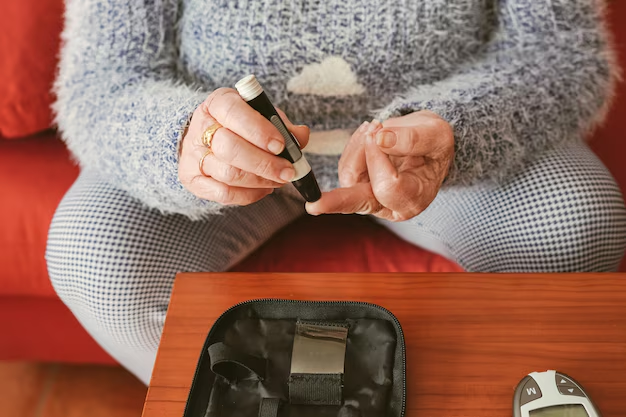The Comprehensive Guide to Cleaning Your Hearing Aids for Optimal Performance
Owning a pair of hearing aids is a significant investment towards enhancing the quality of life through improved hearing. However, maintaining the cleanliness of your hearing aids is essential to ensure their longevity and optimal performance. If you've ever wondered how to properly care for these devices, you're not alone. Cleaning hearing aids regularly can help prevent malfunctions, save on repairs, and provide the best auditory experience possible.
Why Is Cleaning Hearing Aids Important?
Hearing aids, by their very nature, come into contact with earwax, moisture, and dirt. Over time, these elements can obstruct the intricate components, degrade sound quality, and potentially lead to device failure. Regular cleaning and maintenance help avoid these issues and extend the lifespan of your aids.
The Role of Earwax
Earwax is a natural defense mechanism, but it can be a nemesis to hearing aids. It can clog microphones and speakers, reducing efficiency and impacting sound clarity. Cleaning ear molds and vents not only maintains sound quality but also prevents bacteria buildup, which can lead to infections.
Moisture: A Hidden Threat
Moisture can be detrimental to electronic components inside hearing aids. Even sweat, occasional rain, or high humidity can damage these delicate devices. Drying them thoroughly, preferably with a dehumidifier or hearing aid dryer, can significantly reduce moisture-related issues.
Getting Started: Essential Tools for Cleaning Hearing Aids
Before diving into the cleaning process, it's crucial to have the right tools at your disposal. Here's a simple checklist to get you ready:
- Soft, dry cloth: Perfect for wiping down the exterior without causing scratches.
- Hearing aid cleaning brush: These small, specially designed brushes help remove earwax and debris from crevices.
- Wax pick or loop: Essential for clearing out stubborn wax from the speaker and vent openings.
- Vent cleaner: Usually a small, flexible wire designed to dislodge obstructions from vent tubes.
- Dehumidifier or hearing aid dryer: Helps eliminate moisture that can otherwise degrade the device.
Cleaning Different Types of Hearing Aids
Hearing aids come in various styles and designs, including behind-the-ear (BTE), in-the-ear (ITE), and receiver-in-canal (RIC). Each requires a slightly different cleaning approach.
Behind-the-Ear (BTE) Hearing Aids
- Remove and Inspect: Gently disconnect the earmold from the hook and inspect for wax or debris.
- Clean the Earmold: Use warm, soapy water to clean non-electronic parts; avoid soaking any electronic components. Use a cleaning brush for stubborn buildup.
- Dry Completely: Use an air blower or a dry cloth to ensure no moisture remains.
- Cleaning the Tube: Ensure it's free from moisture and blockages. Replace if yellowed or brittle over time.
In-the-Ear (ITE) and Receiver-in-Canal (RIC) Hearing Aids
- Gently Brush the Devices: Use a cleaning brush to remove wax from all openings, including the microphone port.
- Use a Wax Pick: Clear out any remaining obstructions from the receiver.
- Examine and Replace Wax Guards: Routinely check wax guards and replace them if clogged or damaged.
- Handle with Care: Always handle devices with clean, dry hands to avoid transferring oils or dirt.
Practical Tips for Daily Maintenance
Maintaining hearing aids involves daily routines that can enhance their performance and longevity. Here are some easy-to-follow methods:
- 🗓️ Daily Routine: Clean your hearing aids at night so they're ready for the next day.
- 🏠 Safe Storage: Keep them in a dry, safe place away from children and pets. Use a dehumidifier overnight if possible.
- 👂 Regular Ear Checks: Clean your ears regularly to minimize earwax buildup and enhance device efficiency.
- 🔋 Battery Care: Remove batteries overnight to prevent corrosion. Replace them every 5-7 days or as needed.
Handy Summary: Quick Cleaning Guide 🧼
- Soft Cloth: Wipe down daily to remove oils and moisture.
- Brush and Pick: Weekly cleaning of ports and vents.
- Wax Guards: Check and replace monthly or as needed.
- Dehumidifier: Use nightly to combat moisture.
Trouble-Shooting and Common Mistakes to Avoid
Despite routine cleaning, users may encounter issues. Knowing how to troubleshoot common problems is essential.
Common Issues
- Muffled Sound: Often due to blocked microphones or receivers. Regular cleaning with brushes and picks can prevent this.
- Feedback or Whistling: Can occur if the device is not fitting correctly. Re-check the fit or consult a professional.
- Intermittent Sound: Moisture could be causing this problem; ensure devices are dry.
Mistakes to Avoid
- Improper Cleaning Techniques: Avoid using liquid or alcohol on the device's electrical components.
- Neglecting Routine Maintenance: This can shorten the life of your hearing aids and lead to costly repairs.
- DIY Repairs: Do not attempt repairs on your own. Consult an audiologist if problems persist after cleaning.
When to Seek Professional Help
While regular cleaning and maintenance can prevent most issues, professional servicing is occasionally needed. Signs that it's time to consult an expert include persistent malfunction, visible damage, or discomfort while wearing your hearing aids.
Audiologists and hearing specialists can provide deep cleaning, complex repairs, and professional guidance tailored to your particular type and style of hearing aid, ensuring they function optimally.
In summary, maintaining and cleaning your hearing aids is vital to their performance and your hearing health. By incorporating these cleaning practices into your routine and staying vigilant in their upkeep, you'll enjoy clearer sounds, fewer repair needs, and a longer device lifespan. 🦻✨

Related Topics
- a Plus Hearing Aid Centers
- a Real Pain Showtimes Near Centerville
- Are Airpods Bad For Your Ears
- Are Apple Second Generation Airpods Hearing Aids
- Are Audien Hearing Aids Just Amplifiers
- Are Costco Hearing Aids As Good As Others
- Are Costco Hearing Aids Good
- Are Hearing Aid Domes Interchangeable
- Are Hearing Aid Subscriptions Worth It
- Are Hearing Aid Tax Deductible